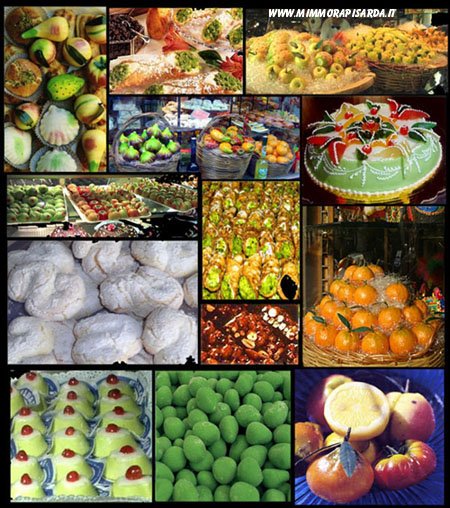
Sicilians can't handle order or rules from anyone ... except in the kitchen :
.....No cappuccinos after noon,
.....no cheese on seafood risottos
.....no butter on bread
.....(the list is endless)...
Despite this, there are a few rules that seem to have been broken in Sicilian cuisine, for very tasty reasons of course ;)
We (Sicilians) can tolerate cheese on certain seafood dishes, but a cappuccino after lunch is still a big no-no. It is almost considered a crime.
Siciliamo loved how Robert Trachtenberg's from New York Times Sunday Magazine broke all the culinary rules he could, leaving the Italians indignant and with very funny facial expressions.
Trachtenberg knows it's against the culinary rules to ask for grated cheese on seafood risotto, as traditional Italian chefs claim it masks the delicate seafood flavour. But he's not buying it - he likes it that way. Chefs chastise him, waiters serve him in secret, whispering that they fear for their jobs......
Sneer all you want, but I like cheese on seafood pasta. For years I even managed to escape the wrath of the Italian people for this supposed transgression. And then I went to Milan.
The waiter didn’t yell at me exactly.
Rather, he turned to the nearest table and started screaming at them — something about ruining his food, the culture, the country, but then I lost the thread.
That was the beginning of the end. In Venice, I was chastised for putting cheese on shrimp rigatoni.
In Los Angeles, an Italian waiter looked around anxiously as he shredded some Parmesan onto my plate. “I could lose my job for this,” he said. In New York, the menu at Da Silvano stated in no uncertain terms, “No cheese served on seafood at any time.”
From Palermo to Palos Verdes, the more outraged and belligerent they became, the more I stood my ground. Don’t put cheese on your seafood, don’t order a cappuccino after noon, keep your bread right side up — the rules never stopped. Was I in my own culinary Siberia? Where did this no-cheese ordinance originate, and could I find a reputable Italian chef willing to break rank with me?
As I broached the topic with chefs and cookbook authors from around the world, I duly noted the wide range of opinions: “It is a very difficult thing for me to accept.” “When I think of this, my mouth does not water.” “Not in our culture. No. Never.” Which all basically boiled down to this: Sprinkling cheese on any seafood will stamp out the subtle flavor of the fish.
Still, it seemed less an informed decision than a mantra. “It’s just a blanket rule they’ve imposed on themselves,” says David Pasternack, the chef at the Italian seafood restaurant Esca in New York. “They don’t want to try anything new.” According to
Lidia Matticchio Bastianich, the issue is also a regional one. “Mare e monte — mountain and sea.” she says. “It wasn’t until I went south that I had even heard it was possible to work cheese into a recipe at the sauce level.” A little research, however, turned up the oldest surviving Sicilian recipe — from around 400 B.C. — for fish: “Gut. Discard the head, rinse, slice; add cheese and oil.”
“I just don’t buy it,” says Nancy Harmon Jenkins, the author of “Cucina del Sole.” “A tablespoon of grated cheese is not going to cancel out the flavor; it’s going to enhance it. So many fish-pasta dishes have tomato, usually from a can, and you can tame the acidity with a little cheese. But use an aged pecorino, never a pecorino Romano, which is too sharp.”
To further support my cause, I called the venerable Quinzi & Gabrieli in Rome, having heard a rumor about a certain pasta with lobster topped with pecorino on the menu. At first they denied it, but then the chef, Magdi Nabil, admitted to a pasta all’ Amatriciana with a twist. “We take an old Roman dish and substitute the pancetta with white fish,” he says.
“I decided that the delicate taste of the pecorino di fossa energetically supports the fish and creates gastronomical equilibrium.”
A call to da Fiore in Venice yielded a pennette with sea scallops, broccoli florets and grated Parmigiano-Reggiano. And on and on it went in recipes both historic and contemporary: vermicelli alla Siciliana, crostata alle acciughe, not to mention dozens of seafood risottos finished off with cheese. When I pointed these out, even the most hard-line chefs started to backpedal: “Ah! But this is O.K.” As Jenkins says: “One of the great things about
Italy is they love making rules. And they obey very few.”
I can’t think of a more subjective art form than cooking; after sloughing through all the chemical reactions that have to occur and the memories that cloud your judgement (your mother’s kitchen, that little diner you loved, what you were eating when the restraining order was lifted), you’re left facing some iron edict of the Italian people that just doesn’t hold up.
While visions of Lucy Ricardo ordering escargot and ketchup dance in your head, I want to mention the one Sicilian dish I feel never needs any embellishment: pasta con le sarde, served at Gusto in Greenwich Village. It’s a perfectly balanced combination of sardines, fennel, currants and bread crumbs (often called “the peasant’s cheese”). Of course, if you want to put cheese on it, go ahead. But it’s an outrage.
__________
 Nobody knew how good it tasted, until Sicilians revealed one of their best kept culinary secrets : Cucunci.
Nobody knew how good it tasted, until Sicilians revealed one of their best kept culinary secrets : Cucunci. del Cappero (Caper Festival).
del Cappero (Caper Festival).






